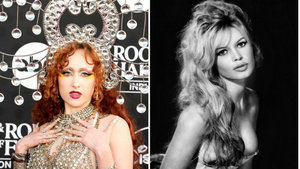Photo: The 1973 UpStairs Lounge arson attack in New Orleans.
In July, the California Board of Education finalized its new K-12 History-Social Science Framework, which includes LGBT material across eight grades from elementary to high school. This is the first effort in the country to standardize LGBT history. Shortly before that, President Obama made history by naming the Stonewall Inn in New York City, the site of the protest that began the modern gay liberation movement in 1969, a national monument.
Despite these significant advancements, LGBT history remains largely absent from school curricula from the elementary level to doctoral education throughout the country, and most Americans know little to nothing about LGBT history.
Given the efforts by the LGBT community to develop history as a central platform of gay liberation, there should not be such a glaring absence.
During the 1970s, LGBT activists turned to history as a way to inform their cultural identity. History became the force that glued them together as a community. Gay newspapers commonly featured scores of articles on the LGBT past, plays were developed that functioned as historical documentaries, bookstores sprung up that aimed to feature gay history, history slideshows took place at lesbian bars, activists invoked gay history as a rallying cry at political protests, and canonical writers from the past were propped up as political heroes for the present.
History sustained the continuation of the movement by connecting people across broad geographic terrains, and offering disparate communities with a shared heritage.
The search for LGBT people in the past was not easy. Before the 1970s, card catalogs in libraries would list pathology, crime, and disorder as subheadings for homosexuality. And while other minorities could be identified on census records or birth certificates by their race or gender, sexuality did not get universally registered as a formal category of identity on many official government documents. LGBT people were missing persons. The only place they could be found was in prejudicial repositories: criminal court cases, medical records, court-martial documents, asylum accounts, condemning sermons, and prison registers.
Activists in the 1970s understood this problem and began a massive effort to read beyond these biased classifications in order to find traces of men and women who evinced intimate, romantic, or physical relationships with people of the same gender as well as evidence of people who defied traditional gender conventions. In 1976, historian Jonathan Ned Katz compiled close to 700 pages of documents that provided the first ever history of LGBT people in the United States. This crucial intervention offered a necessary historical antecedent to the gay liberation movement of the time. Katz not only found LGBT people in documents from the past, but he also began to theorize about how LGBT people were marginalized in the first place. For Katz and others, LGBT history was about the recovery of queer people from the past as well as the political forces that marginalized them.
Gay activists also believed that telling the history of LGBT people helped to fight against discrimination. In 1974, Jim Steakley wrote an article in the gay newspaper The Body Politic about the Nazi persecution of gay people in Germany, which at the time was not documented even in books on World War II. "We had to show examples of oppression, " Steakley once explained to me. "People would say that gay people are not discriminated against," particularly in employment discrimination cases. By publishing historical accounts in both newspapers and books, gay activists used history as evidence of broader patterns of discrimination.
LGBT history is a catalog of the past as well as a tool to educate people about LGBT culture. Yet many fear teaching gay history as a tool to inform students about LGBT people because they assume that being gay is just about sex and thereby not appropriate to teach to younger students. Randy Thomasson, who opposed the California initiative to teach LGBT history, referred to LGBT people in history books as "unnatural" and "unhealthy role models" for children as young as 6 years old" on his website SaveCalifornia.
Educators are also guilty of not including LGBT history based on the assumption that other areas of history demand more attention. History teachers are more inclined to emphasize the history of war, economics, or politics than the history of sexuality. LGBT members of the American Historical Association, which is the leading history organization in the country, created the Committee on Lesbian and Gay History in 1979 in order to promote the history of LGBT people. Without it, the annual meeting, which brings together more than 5,000 members each January, would risk not having sessions on LGBT people or even the subject of queer sexuality featured as an integral subfield of research and teaching in the profession.
From the 1970s to the present, LGBT historians offer broad, comprehensive accounting of the past that could be easily adopted into history courses today. They wrote surprising stories about gay men being burned at the stake at the Salem witch trials; they unearthed accounts about a thriving gay world that predated Hitler's takeover of Berlin and of a working-class lesbian community in Buffalo who wore "boots of leather and slippers of gold." LGBT historians have also documented the federal government's response to homosexuality and the ways that the meaning of sexuality changed as result of the presence of queer people in prisons.
Telling LGBT history also means explaining the history of American freedom. LGBT history sits at the crossroads of women's history and African-American history. The gay liberation movement intersected with the black civil rights movement and the rise of feminism, and depended on these struggles for guidance and insight. LGBT people were often part of both or all three movements, because of their identity or political orientation. Yet this history has not been fully told.
October marks LGBT History Month, which acknowledges our significance in the United States, just as African-American History Month, in February, and Women's History Month, in March, do for those a groups of people.
There is no shortage of accounts of LGBT history -- much was written in the 1970s and even more is being written today -- but the American public does not know it. This is not an unfamiliar pattern. Women's and African-American history suffered from this as well until schools and textbooks required inclusion.
Now more than ever, as the political climate threatens the very disavowal of LGBT people, we need to ensure that we are included in history books, taught in schools, and that the American public knows our history. Our presence continues to be contested in court rooms that seek to repeal our rights, among presidential candidates who gain momentum by promising to defund services that protect our health, and within our own communities that have been sites of violence and terror.
We need LGBT History Month, just like we needed it 40 years ago, to prove that we are here.
JIM DOWNS is the author of Stand By Me: The Forgotten History of Gay Liberation (Basic Books, 2016). He is also an associate professor of history at Connecticut College. He lives in New York City.






































































Charlie Kirk DID say stoning gay people was the 'perfect law' — and these other heinous quotes